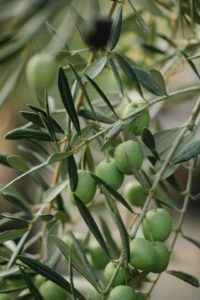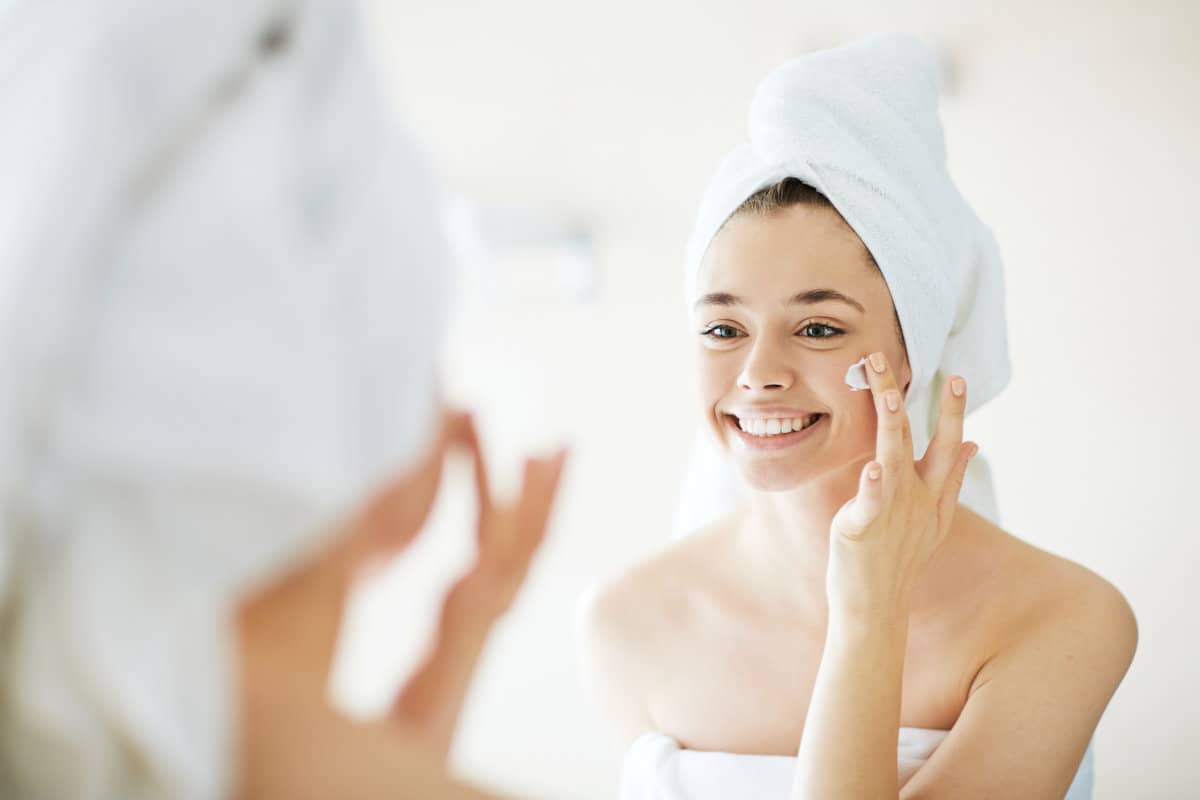Plat-derived squalane is used in many formulations and is becoming an essential ingredient in cosmetics. Increasingly known by consumers, it is becoming a commercial argument in its own right. Some even present it as the pretender to the throne of the miracle molecule, stealing hyaluronic acid’s leading position. But is it really that simple? Let’s take stock of the respective properties and benefits of these two molecules.
Restore your skin’s natural moisture barrier with squalane, protecting your epidermis from environmental stressors, slowing down the aging process, and keeping your skin healthy and hydrated.
Hyaluronic acid in cosmetics
With the formula (C14H21NO11)n, hyaluronic acid is a glycosaminoglycan. This large carbohydrate (sugar) molecule is naturally present in the skin. The dermis and epidermis can contain up to 70% hyaluronic acid. Produced continuously by the body, which replaces it as soon as it is degraded, its main property is its ability to absorb a large quantity of water. However, as we age, the amount of hyaluronic acid produced by the body gradually decreases by about 6% per decade.
Benefits and uses in cosmetics

The main property of this molecule is that it can absorb a large amount of water. Hyaluronic acid thus fills the spaces between the skin cells and contributes to a better hydration.
Its plumping effect and its ability to fill in wrinkles and fine lines make it an ingredient of choice in the fight against skin ageing. It also enables the skin to regain its suppleness and elasticity. Products rich in hyaluronic acid can also compensate for its inexorable decline over the years. This molecule is a natural ingredient in many anti-ageing products.
It also stimulates the natural regeneration of the skin and reinforces its natural protection. Hyaluronic acid restores radiance of dull or tired skins, and boosts the healing of damaged skin.
Its antioxidant action can also protect the skin against damage caused by UV rays (without replacing an essential UV filter).
Its benefits are not limited to the skin, as it also deeply hydrates the hair and scalp. It is particularly effective against dry and brittle hair.
Hyaluronic acid is found in many day and night creams, sunscreens, serums and hair products. It can also be injected directly by a competent practitioner to plump up the skin locally and reduce wrinkles.
Production methods
Hyaluronic acid is naturally present in many living organisms, both plants and animals.
You can still find hyaluronic acid of animal origin on the market, produced on the basis of cockerels crests, which naturally contain a large quantity of it. Consumers and cosmetic brands generally prefer hyaluronic acid of plant origin. This is obtained through a process of biofermentation of certain plants, particularly cereals (wheat) or vegetables (beetroot).
Squalane in cosmetics
Squalene, with the formula C30H50, is naturally present in many animals and plants. Essential for humans, it is part of the composition of sebum, a hydrolipidic film secreted by the sebaceous glands. Squalene production decreases with age, and this deficiency contributes to skin ageing.
Squalene is a molecule that can oxidise and degrade rapidly. The cosmetics industry transforms squalene into squalane through a hydrogenation process. This derivative, with the formula C30H62, is much more stable than squalene, while possessing biomimetic properties that make it a healthy product with very few allergens.
Benefits and uses in cosmetics
Very similar to squalene, a natural component of human sebum, squalane is nowadays a must in many cosmetic formulations, thanks to its countless benefits.
It contributes to the restoration of the hydrolipidic film, preserves the skin from loss of hydration, and protects it from external aggressions (pollution, climatic conditions, bacteria, etc.). It is also known for its emollient properties, preserves the suppleness and elasticity of the skin, while playing a key role thanks to its smoothing and softening properties. It also promotes a luminous and radiant complexion. Squalane’s lightweight texture makes it suitable for all skin types, including oily and acne-prone skin. An asset for a hydrated skin, without clogged pores.
Squalane is also known for its antioxidant properties. It helps to fight against free radicals, which damage skin cells and can break down collagen naturally present in the skin. By penetrating deep into the skin, it can also reduce the appearance of fine lines and wrinkles. Squalane is being used in a growing number of anti-ageing products.
This cosmetic ingredient forms a protective film on the surface of the hair and helps maintain moisture. Squalane is also used in hair care products, such as repair serums and protective care products.
Squalane is fat-soluble, so it can be easily blended into an oil-based solution. It thus stimulates emulsions with a particularly fine structure, and is known for its silky, non-greasy feel. This unique sensoriality makes it a valuable ingredient in a market where the beauty routine also becomes a moment of relaxation and well-being.
Squalane’s emollient properties make it an ideal ingredient for serums and moisturizers, delivering intense hydration and offering a silky touch. Incorporating squalane oil into your daily skincare routine can help replenish lost moisture, leaving your skin feeling soft, supple, and revitalized
Production methods
Squalene is naturally present in many living organisms, plants and animals. It is extracted by various processes and then undergoes a hydrogenation process that transforms it into squalane.
It can also be synthesised from hydrocarbons, and is then based on a petrochemical process that is polluting and not in line with the expectations and values of many consumers.
A process of synthesis, by the fermentation of sucrose, makes it possible to produce squalane from carbohydrate molecules derived in particular from sugar cane. This process is complex and relies on genetically modified bacteria.
Stakeholders in the cosmetics sector are favouring squalane of plant or biosynthetic origin, in line with their values and market expectations.
PHYTOSQUALAN, squalane by Sophim
 Sophim, a European manufacturer of cosmetic ingredients based in France and Spain, has developed a unique know-how around the production of squalane of vegetable origin.
Sophim, a European manufacturer of cosmetic ingredients based in France and Spain, has developed a unique know-how around the production of squalane of vegetable origin.
PHYTOSQUALAN is a squalane obtained from a noble and local raw material in southern Europe, the olive. Our engineers and technicians have been developing and using squalene extraction processes for several years, using olive by-products.
By following an upcycling approach, we offer you a high quality product that is environmentally friendly. The use of upcycling enables us to reduce agricultural pressure, and thus contributes to the protection of the soil while guaranteeing olive growers and the actors of the sector a complementary income.
In order to diversify and secure our sources of supply, we have developed other squalane production processes. PHYTOSQUALAN VG is thus obtained from soya and sunflower.
Hyaluronic acid or squalane : complementary molecules?
Articles presenting squalane as the new hyaluronic acid are flourishing in the general public media and certain specialist media. Beyond the hype, should we necessarily oppose these two molecules?
A star in cosmetics for many years, hyaluronic acid is best known for its plumping effect and for its ability to fill in wrinkles and fine lines. It also helps maintain the skin’s moisture level. It is easily presented as a valuable molecule in anti-ageing treatments. But it also has its limits, and is not always sufficient to meet the expectations of cosmetic brands and their customers.
Squalane is often compared to hyaluronic acid, as it is biomimetic and is also very beneficial in promoting skin hydration. Squalane has many benefits that hyaluronic acid does not, such as its antioxidant properties, its protective role or, quite simply, its sensoriality.
Skincare enthusiasts are increasingly turning to products containing both squalane and hyaluronic acid for their hydrating and moisture boosting properties.
If squalane can replace hyaluronic acid with real benefits for consumers, each formulation is unique and is designed by seasoned professionals. Depending on the other ingredients included in the formula, the expected benefits and the positioning of the product in its market, hyaluronic acid may be more relevant than squalane in certain situations.
Your plant-derived squalane with Sophim
Would you like to offer your customers cosmetic ingredients of plant origin, combining quality and respect for the environment and nature? Sophim designs and produces a wide range of products in France and Europe.
Are you looking for healthy and biosourced cosmetic ingredients? You can get in touch with your usual contact at Sophim, or contact our teams by telephone on (+33)4 92 33 17 17. You can also, if you prefer, send us a message. We will discuss your requirements and our solutions.
Category: Cosmetics Expertise






